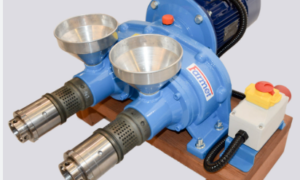Purchasing used farm equipment can offer a variety of advantages, one of which is the substantial cost savings compared to buying new machinery. When you opt for pre-owned items, you are often able to acquire more or higher-quality equipment for the same amount of investment. This cost-effectiveness can be a significant factor in maintaining the profitability of your farming operations, especially in an industry where margins can be tight and initial investments are typically high.
Another benefit to consider is the depreciation factor. New farm equipment can depreciate rapidly within the first few years of use. By choosing used machinery, you avoid the steep initial depreciation hit. Furthermore, used equipment often comes with a proven track record of performance. You have the opportunity to assess its reliability based on its operational history, which is not possible with brand-new machinery that hasn’t been tested in the field.
Lastly, the decision to buy used equipment is an environmentally friendly choice. By extending the life cycle of machinery, you contribute to reducing waste and saving the resources that would otherwise be used to manufacture new equipment. This sustainability aspect aligns with the growing global emphasis on environmental responsibility in agriculture. Additionally, the pre-owned market is vast, offering a diverse selection that can meet specific needs, whether you’re looking for tractors, ploughs, or harvesters.
Cost Savings
When you buy used farm equipment, your primary financial benefits come from a reduced initial investment and slower depreciation rates.
Reduced Initial Investment
The upfront cost of purchasing farm equipment is significantly lower when you opt for used machinery. For instance, a new tractor can cost upwards of $100,000, while a similar used model may be available for 30% to 50% less. This stark difference in price allows you to allocate funds to other essential areas of your farm operation or to invest in additional equipment.
Lower Depreciation Rates
Used farm equipment has a slower depreciation curve compared to new purchases. A new piece of equipment can lose up to 40% of its value in the first year alone. In contrast, used equipment has already undergone the most substantial period of depreciation. This trend means that if you decide to resell the equipment later, you’re more likely to recover a higher percentage of your original purchase price.
Environmental Benefits
When you choose to buy used farm equipment, you enjoy significant environmental benefits. This choice supports recycling efforts and often results in a lower carbon footprint associated with farming practices.
Recycling and Reuse
Buying used farm equipment allows for the recycling and reuse of materials, which means less waste being sent to landfills. This approach maximizes the lifespan of the machinery and ensures that the energy and resources invested in its production are utilized to their fullest potential. By extending the life of farm equipment, you are directly contributing to a more sustainable model of consumption.
Lower Carbon Footprint
Opting for used farm equipment also translates to a lower carbon footprint. Manufacturing new machinery requires significant amounts of energy and resources, including fossil fuels, which result in greenhouse gas emissions. In contrast, the carbon emissions associated with manufacturing are avoided when you purchase used equipment. It also reduces the need for new raw materials, further decreasing the overall environmental impact of your farming operations.
Quality and Durability
When you consider purchasing used farm equipment, it’s important to recognize the inherent quality and durability that comes with machinery that has stood the test of time.
Proven Performance
Used equipment has demonstrated its capability in the field; the sheer fact that it is operational after extensive use is a testament to its performance. You can find numerous models with a proven track record, showcasing their ability to function effectively even after years of service.
Time-Tested Reliability
Equipment with time-tested reliability often comes with a history of maintenance and repair, indicating that previous owners have kept the machinery in good working condition. Such items are likely to sustain their functionality over time, making them a trusted choice for your farming needs.
Market Considerations
When you’re in the market for used farm equipment, understanding availability of spare parts and assessing the potential resale value should be at the forefront of your decision-making process. These factors can greatly influence the total cost of ownership and the lifespan of the equipment.
Availability of Spare Parts
The prospect of finding spare parts for your used equipment greatly depends on the make and model. Common brands and models generally have a more abundant supply of parts, which can translate to lower prices and easier acquisition. For instance, if you purchase a John Deere tractor, due to the brand’s widespread use, you’re more likely to find a local dealer or an online store that stocks the necessary parts. It’s prudent to research the availability of spare parts for a specific piece of equipment before finalizing any purchase to ensure long-term maintainability.
Resale Value
The potential to resell the equipment and retain value is another critical consideration. Equipment from well-known manufacturers often has a stronger resale market, partially due to the perceived reliability and the availability of parts. Examining recent sales of similar models can give you an indication of what you might expect in terms of depreciation. For instance, a used Case IH combine may hold its value better than less prevalent brands due to its reputation and demand. By understanding the typical depreciation rates and market demand, you can estimate the equipment’s future resale value.



































